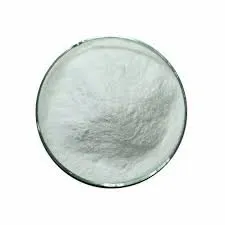
9월 . 01, 2024 21:40 Back to list
What is HPMC? | Understanding Hydroxypropyl Methylcellulose
What is HPMC?
Hydroxypropyl Methylcellulose (HPMC) is a non-ionic, water-soluble polymer derived from cellulose, a natural polymer obtained from the cell walls of plants. HPMC is widely used across various industries, including pharmaceuticals, food, cosmetics, and construction, due to its unique properties and versatility. As one of the most important derivatives of cellulose, HPMC plays a significant role as an excipient in drug formulations and a functional ingredient in many products.
Composition and Structure
HPMC is synthesized by modifying cellulose through a series of chemical reactions. The cellulose source undergoes etherification, resulting in the introduction of hydroxypropyl and methyl groups into the cellulose backbone. These modifications greatly enhance the solubility and functionality of cellulose. The degree of substitution of hydroxypropyl and methyl groups determines the viscosity and solubility of HPMC in water.
Properties
HPMC is known for its unique physicochemical properties. It is odorless, tasteless, and non-toxic. When mixed with water, HPMC forms a clear, viscous solution, making it an excellent thickening agent. It exhibits a wide range of viscosity levels, which can be tailored to suit specific applications. Additionally, HPMC has excellent film-forming capabilities, providing a protective layer in various formulations. Its water-retention properties are also noteworthy, allowing for extended moisture retention in formulations, which is particularly useful in food and cosmetic products.
Applications
what is hpmc

1. Pharmaceuticals One of the most significant uses of HPMC is in the pharmaceutical industry. It serves as a binder, coating agent, and controlled-release agent in tablets and capsules. Due to its film-forming ability, HPMC is commonly used to coat tablets, improving their stability and extending their release profile. It is also found in eye drops and other liquid formulations, where its viscosity enhances the product’s performance.
2. Food Industry In food applications, HPMC acts as a thickener, emulsifier, and stabilizer. It is often used in gluten-free products to improve texture and moisture retention. Additionally, it is employed in the formulation of sauces, dressings, and ice creams, contributing to a smooth texture and preventing separation.
3. Cosmetics and Personal Care HPMC is widely used in cosmetic formulations as a thickener and emulsifier. It enhances the texture and stability of creams, lotions, and gels, while also providing a smooth application on the skin.
4. Construction In the construction sector, HPMC is utilized as a water-retaining agent in cement-based applications. It improves workability, extends open time, and enhances adhesion in tile adhesives, drywall compounds, and other construction materials.
Conclusion
Hydroxypropyl Methylcellulose (HPMC) is a versatile and multifunctional polymer that has become indispensable across various industries. Its unique properties, including water solubility, thickening ability, and film-forming capacity, make it a valuable ingredient in pharmaceuticals, food, cosmetics, and construction materials. As research and technology advance, the applications of HPMC are expected to expand, solidifying its position as a crucial component in modern formulations. Whether it's improving drug delivery, enhancing food texture, or stabilizing cosmetic products, HPMC proves to be an essential material in today's market.
-
Versatile Hpmc Uses in Different Industries
NewsJun.19,2025
-
Redispersible Powder's Role in Enhancing Durability of Construction Products
NewsJun.19,2025
-
Hydroxyethyl Cellulose Applications Driving Green Industrial Processes
NewsJun.19,2025
-
Exploring Different Redispersible Polymer Powder
NewsJun.19,2025
-
Choosing the Right Mortar Bonding Agent
NewsJun.19,2025
-
Applications and Significance of China Hpmc in Modern Industries
NewsJun.19,2025







